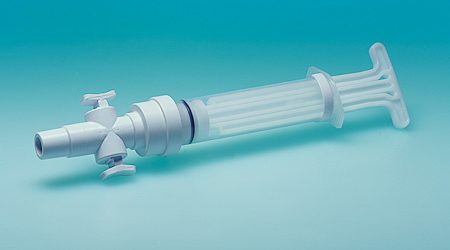Abortion at 5 Weeks: 6 Easy WAYS (Medical pills and Surgical)

Last updated on July 26th, 2018 at 05:20 pm
Question: What are the steps to take to safely have an abortion at 5 weeks? What are the risk and side effects of medical or surgical abortion at 6 weeks?
If you’ve had sex and now tested positive for pregnancy, it’s only a cause for concern if you are not ready for a baby.
Most of the time, teenage girls find themselves in a situation when they get pregnant and quickly want to get rid of pregnancy through the fastest and safest means.
You should know that if you are already five weeks pregnant, there are simple techniques that quickly stop your pregnancy.
Having said that, an abortion at any time of pregnancy comes with its own risk. Also, In some countries, it’s not acceptable that you can have an abortion. In fact, if you do, it’s criminal.
So, before you take some of the abortion pills (described later in this article), you should inform your doctor for an explanation, and also, if any laws prohibit abortion in your country.
Here’s an email I received from Merkel (one of my blog readers)
Hi Dunn
I am 5 weeks pregnant and not ready for a baby yet. Unfortunately, I’m not sure who’s responsible for my pregnancy, and I’m yet to tell anyone about my problem.
I want to get rid of pregnancy but am confused about what drugs to take. I’m worried about long-term complication, and I need your help. Please reply.
If you are 5 or 6 weeks pregnant, this article explains medical and surgical termination of pregnancy, side effects of pills, and danger signs that indicate something’s not right.
What you should know about abortion at 5 or 6 weeks
- Abortion is termination of pregnancy, and it may not be permitted in your country. (Here is list of countries that do not accept abortion).
- After an abortion, If you do not have the right counseling or support, the feeling of guilt comes in. So, it’s vital that you are 100 percent sure you want to end your pregnancy. I suggest you talk to your partner, husband, boyfriend, and doctor for help you need.
- There are short or long-term risks of abortion. However, if you are 5 or 6 weeks pregnant, the risk and complications are quite less than in the second trimester of pregnancy.
Medical abortion at 5 weeks pregnant
If you are 5 weeks pregnant, there are safe medications that can effectively cause uterine contractions, and then, remove you growing baby out of your womb.
Some of these medications can causes severe cramps and bleeding and may take some time (about two weeks) for you to remove a pregnancy completely.
Here are some abortion pills that work at 5 or 6 weeks of pregnancy.
1. Tablet misoprostol
Misoprostol, commonly sold as Cytotec, is a medication that can stop pregnancy in the first and second trimester.
When used with some other medication like mifepristone and methotrexate, you can expect a better clean-up of your womb.
Misoprostol is a prostaglandin analog that causes your womb to contract when placed under your tongue, at the posterior fornix (deep inside your vagina), or taken through your mouth.
If you are using misoprostol tablets only, there is a risk of incomplete abortion. An incomplete abortion means, your womb contracts, kills your baby and expels only parts of fetal tissues out from your vagina.
If you end up having an incomplete abortion, you will experience bleeding and cramping for a long time. Other side effects of misoprostol for abortion at 6 weeks are diarrhea (watery stool), abdominal pain, feeling like throwing up, vomiting, transient fever, constipation.
2. Tablet mifepristone
Mifepristone, commonly known as RU-486, can be used to stop pregnancy at 5 weeks effectively. But just like misoprostol, effectiveness is better when combined together with other abortion drugs.
To get rid of pregnancy at 5 weeks, you will need to take Mifepristone pills, and then, wait for 2-3 day before taking misoprostol tablets.
If you want to prevent an incomplete abortion, then a combination of both drugs will increase your chances of complete washout.
Side effects of misoprostol are belly pain, vaginal bleeding with blood clots that may last for 14 -16 days, vomiting, nausea, fever, and body weakness.
3. Methotrexate
Methotrexate can also be used to remove an unwanted pregnancy effectively; But like mifepristone and misoprostol, a combination with other medications boost complete clean-up of your womb.
Side effects of medications are vomiting, nausea, diarrhea, fever, and vaginal bleeding.
Surgical abortion at 5 weeks
Apart from the use of drugs to flush out pregnancy, in some women, surgery will be recommended by your doctor.
Mifepristone, misoprostol, and methotrexate are not 100 percent effective in complete termination of pregnancy. So, for women that still have fetal parts within their womb after taking these medications, your doctor will counsel you for the need of surgery.
Here are surgical techniques that will be employed by your doctor
1. Manual vacuum aspiration
After a failed medical removal of pregnancy, your doctor will now use a manual suction tube to “suck out” remaining fetal part from your uterus.
This procedure is entirely safe, and the chance of complications and incomplete abortion is quite slim. It involves the use of an electric or manually handled tubing to pass through the uterine cervix, into your womb, and suck out fetal tissues.
Advantages of this procedure are less risk of complication, less abdominal cramps after abortion, less bleeding, cheap, and it’s an outpatient procedure, meaning, you will not be admitted to the hospital.
Then again, like all surgical procedures, there is a risk of complication. Possible complications you can expect, though rare, are excessive blood loss, vaginal and uterine infections, pelvic inflammatory disease, uterine perforation, cervical injury and uterine adhesions.
2. Dilation and Curettage (D & C)
An older technique used by doctors, though with more complications, is a D & C method. It involves the opening of the cervix with removal of its content through the use of a currete.
The truth is, before 10 weeks of pregnancy, if you are ending pregnancy with pills (misoprostol and mifepristone), it’s unlikely that you will need a surgical procedure. However, if it fails, and you have retained products, a D & C will be performed.
Side effects of a D & C are vaginal bleeding, pelvic infections, injury to your cervix, uterine perforation from over-zealous curettage, and risk from anesthesia used during surgery.
Abortion at 6 weeks: What to expect
1. Vaginal bleeding
Whether you’ve taken drugs or used surgery, mild or heavy vaginal bleeding will come after an abortion.
If you’ve used abortion pills like misoprostol and mifepristone, you can expect a heavy bleeding with clots and fetal parts coming out (a lump of thick, black or brown tissue).
Also, after a surgical abortion at 6 weeks, bleeding is not abnormal. Mild bleeding for days or weeks is not unusual.
2. Abdominal and back pain
Pian in your abdomen and back are not abnormal and can last for one or two weeks. To relieve cramps, take pain relief medications.
